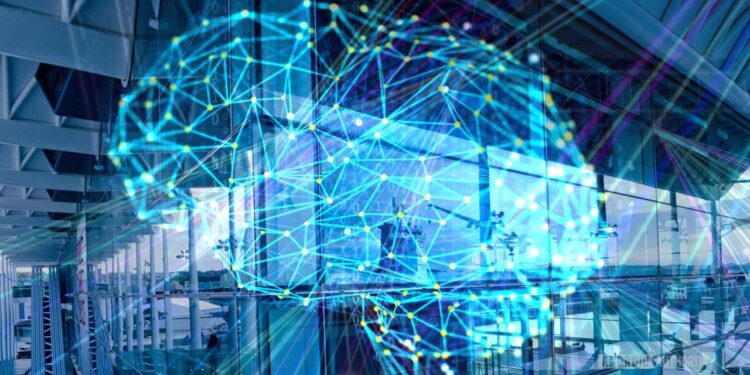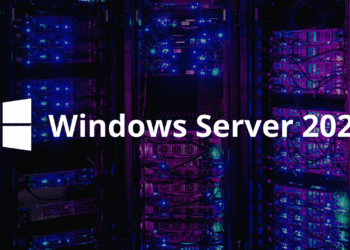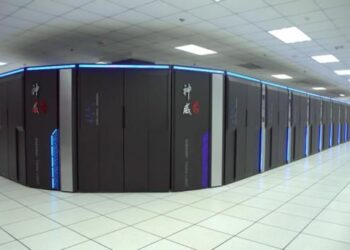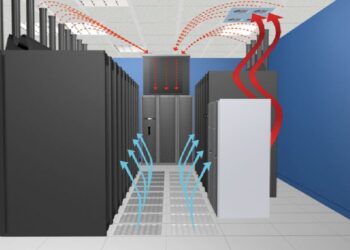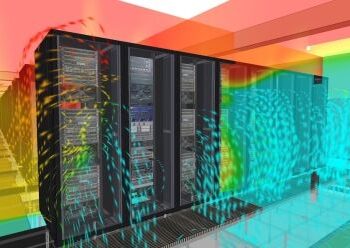Artificial Intelligence (AI) is reshaping the world of technology, and at the center of this revolution are AI servers—robust, specialized infrastructures designed to handle intensive computational tasks. This article delves into the evolution, architecture, applications, and future prospects of AI servers, offering a comprehensive overview that spans over 2000 words. By examining the technical aspects and real-world implications, we aim to provide an in-depth understanding for enthusiasts, professionals, and business leaders alike.
The exponential growth of data, the advent of machine learning algorithms, and the rising need for automation have transformed the digital landscape. Traditional servers, which once served as the backbone for standard computing tasks, are now evolving to support AI-driven workloads. AI servers are purpose-built machines that not only host algorithms and neural networks but also optimize the performance of complex applications such as natural language processing, image recognition, and predictive analytics.
This article explains:
- The evolution of AI servers from conventional data centers.
- The architecture and hardware specifics that set AI servers apart.
- The diverse applications and industries benefitting from AI server technology.
- The challenges, including security and energy efficiency.
- Future trends that may redefine how organizations deploy AI solutions.
The Evolution of AI Servers
Historical Context
In the early days of computing, servers were primarily designed for basic data storage and processing. As businesses grew and the volume of data skyrocketed, the need for more powerful servers became apparent. Over time, innovations in semiconductor technologies, parallel processing, and data center infrastructures led to the development of specialized servers optimized for AI and machine learning tasks.
Transition from Traditional Servers
Traditional servers are typically built to handle general-purpose tasks, such as web hosting, file storage, and routine computations. However, the nature of AI workloads requires specialized hardware capable of:
A. High-Performance Computing (HPC): AI tasks often involve large-scale matrix operations and complex algorithms that benefit from high-performance computing capabilities.
B. Parallel Processing: Many AI algorithms, especially deep learning models, rely on processing vast amounts of data simultaneously. AI servers are equipped with multiple cores and GPUs to enable parallel processing.
C. Memory Bandwidth: The success of AI applications depends on rapid data transfer and access. Increased memory bandwidth in AI servers helps reduce latency and accelerates computations.
Key Innovations Driving AI Servers
The transition to AI servers has been influenced by several technological breakthroughs:
A. Graphics Processing Units (GPUs): Originally designed for rendering graphics in video games, GPUs are now the workhorses of AI computations due to their ability to handle thousands of parallel tasks.
B. Tensor Processing Units (TPUs): Developed specifically for machine learning workloads, TPUs are integrated into AI servers to further boost performance in deep learning applications.
C. Field Programmable Gate Arrays (FPGAs): These reconfigurable chips offer customizable processing capabilities, allowing AI servers to adapt to various workloads dynamically.
Architecture of AI Servers
AI servers are a sophisticated blend of hardware and software, meticulously engineered to optimize the performance of AI tasks. Below, we explore the fundamental components that constitute an AI server and their roles in ensuring efficient operations.
Hardware Components
-
Central Processing Unit (CPU):
Although GPUs and TPUs are the stars of AI processing, the CPU remains crucial for managing tasks, orchestrating data flow, and handling input/output operations. Modern AI servers feature multi-core CPUs that ensure smooth coordination among different hardware elements. -
Graphics Processing Units (GPUs):
GPUs are essential for handling the massive parallel computations required by AI models. They accelerate training processes and support real-time inference, making them indispensable in applications such as image and speech recognition. -
Tensor Processing Units (TPUs) and FPGAs:
Some AI servers incorporate TPUs for enhanced deep learning capabilities and FPGAs for customizable acceleration. These components are vital for tasks that require specific computational optimizations beyond what GPUs offer. -
High-Speed Memory and Storage:
AI applications necessitate quick data access and transfer speeds. High-speed memory (such as DDR4/DDR5 RAM) and advanced storage solutions (including NVMe SSDs) are integrated to ensure that data flows seamlessly between the processing units. -
Networking and Data Transfer:
With AI applications often distributed across clusters, high-speed networking hardware (like 10GbE or faster interconnects) is vital to maintain low-latency communication between servers.
Software and System Integration
The hardware of AI servers is complemented by a robust software ecosystem:
A. Operating Systems and Virtualization:
Many AI servers run specialized operating systems or customized Linux distributions optimized for high-performance computing. Virtualization technologies allow multiple workloads to run concurrently, maximizing resource utilization.
B. AI Frameworks and Libraries:
Popular machine learning frameworks such as TensorFlow, PyTorch, and Caffe are integrated with AI servers to provide developers with the tools necessary to design, train, and deploy models efficiently.
C. Containerization and Orchestration:
Tools like Docker and Kubernetes are widely used to manage AI workloads. Containerization ensures that applications run in consistent environments, while orchestration platforms manage resources dynamically across clusters.
Key Applications of AI Servers
AI servers are not confined to a single domain—they have found applications across a multitude of industries. Their ability to process enormous amounts of data quickly and efficiently has opened new avenues for innovation.
Industry 1: Healthcare
In the healthcare industry, AI servers are revolutionizing diagnostic procedures, treatment planning, and patient management. They enable the analysis of medical images, support predictive analytics for disease outbreaks, and facilitate the development of personalized treatment plans.
-
Medical Imaging:
AI servers help process high-resolution images from MRI, CT scans, and X-rays, aiding radiologists in detecting abnormalities such as tumors or lesions with improved accuracy. -
Predictive Analytics:
By analyzing historical patient data, AI servers can predict disease trends and outbreaks, thereby supporting preventive healthcare measures. -
Drug Discovery:
The ability to simulate molecular interactions rapidly has accelerated the drug discovery process, significantly reducing the time and cost involved in developing new treatments.
Industry 2: Finance
In the finance sector, AI servers are deployed to enhance decision-making processes, manage risk, and optimize trading strategies.
-
Algorithmic Trading:
AI-powered trading systems analyze market trends and execute trades at speeds and frequencies unattainable by human traders. This capability can lead to substantial financial gains. -
Fraud Detection:
By continuously monitoring transaction patterns, AI servers can identify anomalies that may indicate fraudulent activities, thereby protecting financial institutions and their customers. -
Risk Management:
AI models predict potential market fluctuations and assess risks, enabling financial institutions to take proactive measures to mitigate potential losses.
Industry 3: Manufacturing
Manufacturing processes have greatly benefited from the integration of AI servers into industrial automation systems. They optimize production lines, reduce downtime, and ensure quality control through advanced data analytics.
-
Predictive Maintenance:
AI servers analyze data from sensors embedded in machinery to predict equipment failures before they occur, reducing downtime and maintenance costs. -
Quality Control:
By monitoring production processes in real time, AI servers help identify defects early, ensuring that only high-quality products reach consumers. -
Supply Chain Optimization:
Advanced algorithms optimize logistics, inventory management, and production scheduling, leading to increased efficiency and reduced operational costs.
Industry 4: Retail and E-Commerce
Retailers and e-commerce platforms utilize AI servers to enhance customer experiences through personalized recommendations, dynamic pricing, and inventory management.
-
Personalization Engines:
AI-driven recommendation systems analyze customer behavior to provide personalized shopping experiences, thereby increasing customer engagement and sales. -
Dynamic Pricing:
AI models continuously adjust prices based on demand, competitor actions, and market trends, ensuring competitive pricing strategies. -
Customer Support:
AI-powered chatbots and virtual assistants offer real-time customer service, improving satisfaction and streamlining operations.
Industry 5: Autonomous Vehicles
The rise of autonomous vehicles has been closely tied to advancements in AI servers. These servers process data from sensors, cameras, and radar systems to enable real-time decision-making on the road.
-
Real-Time Data Processing:
AI servers are tasked with processing vast amounts of data from multiple sources, ensuring that autonomous vehicles can navigate safely and efficiently. -
Machine Learning Algorithms:
Continuous learning from real-world scenarios helps improve the algorithms that govern autonomous driving, leading to safer roads and more reliable transportation systems. -
Simulation and Testing:
AI servers allow for the simulation of countless driving scenarios, enabling developers to test and refine the performance of autonomous systems without endangering lives.
Advantages of AI Servers
The adoption of AI servers offers numerous benefits that extend well beyond their raw computational power. These advantages contribute to their growing popularity across various sectors.
Enhanced Efficiency and Speed
AI servers are designed to process data at high speeds, which is crucial for tasks that require real-time decision-making. The integration of GPUs, TPUs, and high-speed memory allows these servers to handle complex calculations rapidly, reducing latency and increasing overall efficiency.
Scalability and Flexibility
Modern AI servers are built with scalability in mind. As data volumes grow and AI models become more sophisticated, organizations can scale their infrastructure to meet increasing demands. Virtualization and containerization further enhance the flexibility, allowing businesses to deploy and manage multiple AI workloads simultaneously.
Cost-Effective Operations
While the initial investment in AI servers might be significant, the long-term benefits include lower operational costs. Improved efficiency leads to reduced energy consumption and maintenance expenses. Moreover, the ability to predict maintenance needs and optimize resource usage further contributes to cost savings.
Improved Decision-Making
The ability to analyze vast datasets in real time provides organizations with actionable insights. AI servers enable more informed decision-making by uncovering hidden patterns and trends that might otherwise go unnoticed. This capability is essential for businesses looking to stay competitive in rapidly evolving markets.
Customizable Solutions
AI servers often come with flexible architectures that can be tailored to specific applications. Whether it’s optimizing for natural language processing, image recognition, or predictive analytics, organizations can customize their server configurations to best suit their needs.

Challenges Facing AI Servers
Despite the transformative potential of AI servers, there are several challenges that must be addressed to fully harness their capabilities. Addressing these challenges is essential for ensuring sustainable growth and technological advancement.
Energy Consumption and Sustainability
AI servers are notoriously energy-intensive. The high-performance components and continuous processing requirements result in significant power consumption. As the demand for AI-driven solutions grows, so does the environmental impact. Companies are increasingly focused on developing more energy-efficient hardware and adopting green data center practices.
-
Cooling Solutions:
High-performance computing generates considerable heat. Effective cooling solutions, such as liquid cooling and advanced airflow management, are crucial to maintain optimal operating temperatures. -
Renewable Energy Integration:
Many data centers are now exploring the use of renewable energy sources, such as solar and wind power, to offset their carbon footprints and enhance sustainability.
Security and Data Privacy
The integration of AI into critical infrastructure raises significant security and privacy concerns. AI servers often handle sensitive data, making them attractive targets for cyberattacks.
A. Data Breaches:
A breach in an AI server can result in the exposure of confidential information. Robust encryption protocols, secure access controls, and continuous monitoring are essential to safeguard data.
B. Adversarial Attacks:
Malicious actors may attempt to manipulate AI models by feeding them deceptive inputs. Strengthening algorithms against such adversarial attacks is a critical area of ongoing research.
C. Compliance and Regulation:
With increasing scrutiny over data privacy, organizations must ensure that their AI deployments comply with regulations such as GDPR and HIPAA, which adds an extra layer of complexity to system design.
Hardware and Software Integration
Seamless integration of hardware and software components is vital for optimal performance. Incompatibilities or suboptimal configurations can lead to performance bottlenecks and system failures.
-
Component Interoperability:
Ensuring that various processing units, memory, and networking components work in harmony is a significant engineering challenge. -
Software Optimization:
AI frameworks and applications must be optimized to fully leverage the underlying hardware capabilities. Continuous updates and maintenance are required to keep systems running efficiently.
Cost and Resource Management
While AI servers can reduce long-term operational costs, the initial capital expenditure is high. Organizations must balance performance requirements with budget constraints, often requiring a strategic approach to resource allocation and infrastructure scaling.
Future Trends in AI Servers
The future of AI servers looks promising, with several emerging trends poised to redefine the landscape of high-performance computing and artificial intelligence.
1. Edge AI Servers
Edge computing is gaining traction as businesses look to process data closer to its source. AI servers deployed at the edge enable real-time analytics and decision-making, reducing the latency associated with centralized data centers.
-
Improved Responsiveness:
Edge AI servers provide faster response times, which is critical in applications such as autonomous vehicles, smart cities, and industrial automation. -
Data Privacy:
By processing data locally, edge AI servers can enhance privacy and reduce the risks associated with transmitting sensitive data over long distances.
2. Quantum Computing Integration
Quantum computing represents a paradigm shift in processing capabilities. Although still in its early stages, the integration of quantum components with traditional AI servers could exponentially accelerate computational speed and efficiency.
A. Enhanced Algorithm Efficiency:
Quantum computing could potentially optimize AI algorithms that currently require extensive computational resources.
B. New Research Frontiers:
As research in quantum computing advances, AI servers may harness these capabilities to solve problems that are currently deemed intractable.
3. AI-Optimized Data Centers
Data centers are evolving to support AI workloads more effectively. AI-optimized data centers incorporate advanced cooling systems, renewable energy sources, and highly modular designs to cater specifically to the demands of AI servers.
-
Modular Infrastructure:
Future data centers will feature modular designs that allow for rapid deployment and scalability, adapting to evolving AI requirements. -
Automation and Monitoring:
Integration of AI into data center management systems will further streamline operations, optimize energy usage, and predict maintenance needs.
4. Enhanced Security Protocols
As AI servers become more prevalent, cybersecurity will continue to be a top priority. Future developments are expected to focus on creating robust security frameworks that incorporate advanced encryption methods, real-time threat detection, and adaptive security measures.
A. Blockchain Integration:
Emerging technologies like blockchain could offer decentralized security solutions that enhance data integrity and access control.
B. AI-Powered Security Systems:
Paradoxically, AI itself will play a crucial role in safeguarding AI servers by identifying and mitigating potential threats dynamically.
5. Democratization of AI Resources
Cloud computing providers are already making AI resources accessible to a wider audience. This trend is expected to continue, enabling startups and small businesses to leverage high-performance AI servers without the burden of extensive upfront investments.
-
Subscription-Based Models:
The evolution of subscription-based cloud services means that organizations can scale their AI capabilities as needed without significant capital expenditure. -
Global Accessibility:
The democratization of AI resources is set to drive innovation globally, allowing diverse industries to benefit from advancements in AI server technology.
Real-World Case Studies
To further illustrate the impact and capabilities of AI servers, let’s examine a few real-world examples where these systems have revolutionized operations.
Case Study 1: Smart Manufacturing
A leading manufacturing company integrated AI servers into its production lines to predict machine failures and optimize production schedules. By leveraging high-speed data analytics, the company was able to:
A. Reduce Downtime:
Predictive maintenance allowed for early detection of potential issues, significantly reducing unplanned downtime.
B. Enhance Productivity:
Optimized scheduling led to increased throughput and a marked improvement in overall productivity.
C. Improve Quality:
Real-time monitoring ensured that quality control standards were consistently met, reducing defect rates.
Case Study 2: Healthcare Diagnostics
A major hospital network implemented AI servers to assist in medical diagnostics. The AI-driven system analyzed thousands of medical images daily, providing radiologists with second opinions and highlighting areas of concern. This led to:
A. Faster Diagnoses:
The system’s ability to process and analyze images quickly enabled faster turnaround times for diagnosis.
B. Increased Accuracy:
Advanced image recognition algorithms improved diagnostic accuracy, leading to better patient outcomes.
C. Operational Efficiency:
By automating routine image analysis, healthcare professionals could focus on more complex tasks, improving overall efficiency.
Case Study 3: Financial Risk Management
A multinational bank deployed AI servers to monitor and analyze market trends in real time. The integration of AI-powered analytics allowed the bank to:
A. Mitigate Risk:
Early warning systems detected irregularities and potential risks, enabling proactive measures to avoid significant financial losses.
B. Optimize Trading Strategies:
Real-time data analysis improved the bank’s algorithmic trading performance, leading to increased profitability.
C. Enhance Customer Trust:
Robust fraud detection and security protocols helped maintain customer trust and safeguard sensitive financial data.

Overcoming Implementation Challenges
While AI servers offer transformative benefits, their implementation is not without challenges. Organizations must navigate several key considerations to fully harness their potential.
Strategic Planning and Investment
Implementing AI servers requires a strategic approach that aligns with long-term business goals. Organizations need to assess current infrastructure, determine future needs, and plan investments accordingly. This often involves:
A. Cost-Benefit Analysis:
Evaluating the potential return on investment by comparing upfront costs with long-term benefits.
B. Scalability Considerations:
Ensuring that the infrastructure can scale with the growing demands of AI applications.
C. Staff Training:
Investing in training for IT professionals to manage and optimize AI servers effectively.
Integration with Legacy Systems
Many organizations still rely on legacy systems that are not optimized for AI workloads. Integrating new AI servers with existing infrastructure can be challenging, requiring:
A. Interoperability Solutions:
Developing middleware or APIs that allow legacy systems to communicate with modern AI servers.
B. Phased Implementation:
Gradually transitioning to a new architecture to minimize disruption and ensure continuity of operations.
C. Vendor Collaboration:
Working closely with technology providers to ensure that the integration process is smooth and efficient.
Continuous Innovation and Upgrades
The rapid pace of technological advancement means that AI servers must be continuously updated to remain competitive. Organizations must:
A. Invest in R&D:
Continuously explore new technologies and hardware improvements.
B. Adopt Modular Upgrades:
Utilize modular server designs that allow for incremental upgrades without overhauling the entire infrastructure.
C. Monitor Industry Trends:
Stay informed about emerging trends and adopt best practices to ensure long-term viability.
The Societal Impact of AI Servers
Beyond business applications, AI servers are poised to have a profound impact on society as a whole. Their ability to process and analyze data on an unprecedented scale can drive societal advancements in numerous areas.
Education and Research
AI servers are becoming invaluable tools in educational institutions and research centers. They support:
A. Data-Driven Research:
Facilitating complex simulations and data analysis that drive innovation in fields ranging from environmental science to economics.
B. Remote Learning:
Enhancing online education platforms with real-time analytics and personalized learning experiences.
C. Collaborative Innovation:
Allowing researchers worldwide to collaborate on large-scale projects, thereby accelerating scientific discoveries.
Public Safety and Governance
Government agencies are increasingly leveraging AI servers to improve public safety and streamline administrative processes. For instance:
A. Crime Prediction:
AI algorithms analyze patterns in criminal activity to help law enforcement agencies predict and prevent crimes.
B. Urban Planning:
Data-driven insights assist in optimizing traffic flows, managing resources, and planning infrastructure developments.
C. Disaster Response:
AI servers enable rapid analysis of data during natural disasters, facilitating efficient allocation of resources and emergency response.
Environmental Sustainability
The environmental impact of high-performance computing is significant, but AI servers also offer tools to mitigate ecological challenges. They help in:
A. Climate Modeling:
Complex simulations of climate data assist scientists in understanding and predicting climate change.
B. Resource Optimization:
AI-driven models optimize energy usage in industrial processes, leading to reduced waste and enhanced sustainability.
C. Conservation Efforts:
Monitoring environmental data in real time supports conservation projects and the management of natural resources.
Conclusion
AI servers represent a pivotal advancement in the realm of computing technology. Their evolution from traditional servers to specialized infrastructures optimized for AI tasks has opened new horizons across diverse industries. From healthcare and finance to manufacturing and autonomous vehicles, the benefits of AI servers are far-reaching—enhancing efficiency, driving innovation, and reshaping how organizations approach complex challenges.
As we move forward, continuous innovation, strategic planning, and a focus on sustainability will be critical in addressing the challenges associated with AI server implementation. With emerging trends such as edge AI, quantum integration, and AI-optimized data centers, the future of AI servers looks brighter than ever. They are not only the engines powering modern AI applications but also the foundation for the next era of technological advancement, ultimately transforming the way we interact with data, make decisions, and shape our world.

